Business
Amazon sets 30‑day relocation deadline for corporate staff—opt out by resigning in 60 days
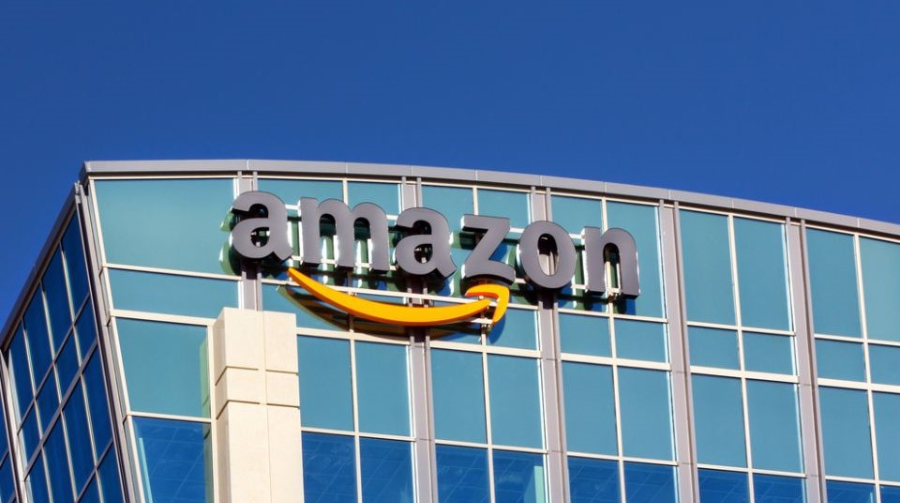
Amazon has issued a firm directive to thousands of its corporate employees: relocate to one of its designated office hubs—Seattle, Arlington, or Washington D.C.—within 30 days or resign within 60, forfeiting any severance package

What’s changing—and why
- Mandatory hub model: The directive requires employees based in remote or satellite offices to move into one of the three major metropolitan areas.
- Tight timeline: Staff must decide within 30 days whether to relocate or start their resignation process within the next 60 days—with no severance safety net .
- Strategic pushback: The move supports Amazon’s new push for greater office presence and collaboration, reinforcing a broader return-to-office mandate.

In the context of layoffs and AI
- Lingering job insecurity: This relocation edict comes amid ongoing concerns about workforce reductions tied to the company’s shift toward AI-driven operations
- Internal warnings: CEO Andy Jassy has cautioned employees about potential upcoming layoffs, intensifying uncertainty and stress across the organization

Employee reactions & wider implications
Feedback on platforms like Reddit’s r/amazonemployees signals deep unease:
Amazon already doing it under the name of PIP”
“The people were notified on 3/12 that their last day ‘employed’ is 5/12. Amazon keeps them employed for the 60 days the WARN Act requires
Employees worry the policy might mask layoffs, using “performance improvement plans” (PIPs) as a pretext under the guise of relocation compliance.
Business
LIC‑Owned NBFC Stock in Focus Post This Update

What’s Making the Stock Noteworthy?
- Paisalo Digital—a LIC-backed NBFC—is making headlines after approving several fundraising initiatives that have shifted investor sentiment. One such move includes issuing Non-Convertible Debentures (NCDs) worth up to ₹50 crore, with a 10% coupon over a 24-month term
- The stock gained significantly after announcing a co‑lending loan agreement with State Bank of India (SBI), aimed at expanding SME lending via digital platforms, leading to a sharp 7% intraday rise in late June
- Earlier in June, it approved issuance of short-term commercial papers totaling ₹30 crore, which helped the stock rebound from its lows

Stock Performance Snapshot
- Currently trading under ₹50, Paisalo Digital’s share price has surged 9–10% in recent trading sessions amid strong market reaction to dividend announcements and Q1 earnings
- That marks a rebound after a sharp YTD decline of nearly 39%, and in the past year alone, the stock has lost over 60% in value
- Despite its small-cap status, the company has delivered over 175% returns over five years, making it a multibagger—but with high volatility and significant downside risk
- Recent regulatory filings also show institutional investor interest, with Equilibrated Venture increasing its promoter stake to around 15.67% of total shares

Why Is It in Focus?
- Aggressive Capital Raising Moves
- The NCD allotment (up to ₹50 cr) bolsters the company’s working capital, while the SBI co-lending tie-up positions it as a serious contender in SME lending
- Growth Versus Risk
- Despite the bullish fundraises, Paisalo faces tight margins and regulatory headwinds. Broader sentiment in the NBFC sector—especially after concerns over Bajaj Finance’s post-earnings decline—is adding to caution
- Stock Sentiment & Momentum
- Unexpected dividend news and board decisions have created short-term buying pressure, but structural weakness and steep recent declines suggest high risk remains

Comparison with LIC Housing Finance (LIC HFL)
While Paisalo captures headlines, its sister company LIC Housing Finance (LIC HFL)—also LIC-owned—offers much more stability but slower growth:
- As of the latest trading, LIC HFL trades around ₹620 on NSE/BSE, with a P/E ratio of ~6.3, well below the sector average of 12–15
- In Q4 FY2025, LIC HFL reported a 25% YoY PAT growth, declaring a 500% dividend payout and showing a loan book increase of around 7% YoY. However, net interest margins declined slightly to ~2.73–2.86%
- Technical analysts note a bearish rising‑wedge formation in LIC HFL’s chart, which may signal near-term pullbacks. Strategic options plays like a “Broken Wing” strategy are being recommended for conservative traders
- LIC HFL also recently launched India’s first-listed residential mortgage-backed securities (RMBS) edition, raising ₹10 billion via AAA-rated 20‑year securities—highlighting its institutional credibility and innovation

Conclusion & Investor Takeaway
| NBFC | Key Attributes |
|---|---|
| Paisalo Digital | Small-cap, high volatility, aggressive fundraising, recent IPO/dividend-driven BJP |
| LIC HFL | Large-cap, stable housing finance play, reliable dividends, expansion via structured debt products |
- Paisalo Digital remains a speculative, high-risk, high-return play: its recent fundraises and strategic partnerships could pay off if execution is solid—but sentiment remains fragile.
- LIC Housing Finance, on the other hand, is more suited for conservative investors seeking steady income, institutional innovation, and stability in the NBFC housing space.
- Broader sector caution remains due to macro pressures and recent NBFC volatility—Bajaj Finance’s decline casts a long shadow over smaller players too
Business
Metro Boost for Ghaziabad: DMRC Proposes Blue Line Expansion from Noida — Full Details
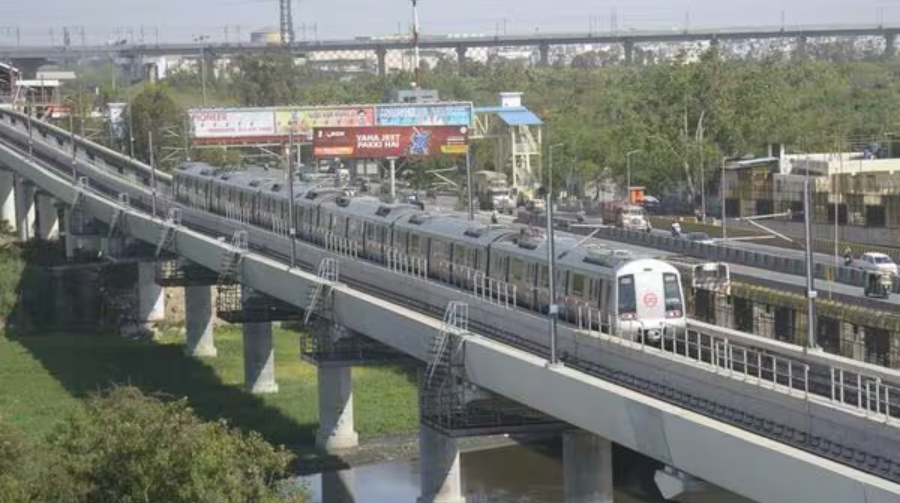
The National Capital Region (NCR) is set for a major metro connectivity upgrade as the Delhi Metro Rail Corporation (DMRC) proposes a 5.1–5.8 km Blue Line extension from Noida Electronic City (Sector 62) to Sahibabad in Ghaziabad. This move could drastically cut travel time, reduce congestion at key Delhi interchange stations, and finally give Ghaziabad residents direct metro access to Noida.
But what exactly is being proposed, who will benefit, and what are the potential roadblocks? Here’s everything you need to know.

The Current Problem
As it stands, Ghaziabad and Noida — despite being only 10–12 km apart — have no direct metro line connecting them. Commuters must take the Blue Line through Delhi, changing trains at Yamuna Bank or Rajiv Chowk, or navigate congested roads.
This adds 30–45 minutes extra to otherwise short intercity commutes. With Ghaziabad’s population crossing 20 lakhs and many tech workers living in Indirapuram or Vasundhara but working in Noida, the demand for a direct metro link has long been growing.
What the DMRC Is Proposing
After shelving two older route options in 2018 and 2020 due to budget constraints, DMRC has submitted a revised plan in early 2024, which includes:
- An elevated metro extension of approximately 5.83 km from Noida Sector 62 to Sahibabad
- 5 proposed stations:
- Vaibhav Khand
- DPS Indirapuram
- Shakti Khand
- Vasundhara Sector 5
- Sahibabad (to link with the Rapid Rail system)
- Estimated ridership: Over 1.25 lakh daily commuters within 2 years of completion
This plan is now a key part of DMRC’s Phase‑V expansion, which includes four new metro corridors in Ghaziabad.
The Budget: How Much Will It Cost?
The project isn’t cheap. Here’s how the numbers break down:
- Revised cost (2024): ₹1,866–1,873 crore (compared to ₹1,517 crore in 2018)
- Land acquisition: ₹223 crore (for ~26,000 sq meters, including 7,600 sq m private land)
- Construction cost: ~₹1,500 crore including stations, pillars, tracks, etc.
- Funding split:
- 80% from state agencies (Ghaziabad Development Authority, UP Housing Board)
- 20% from central government
- Additional loan assistance planned from NCR Planning Board
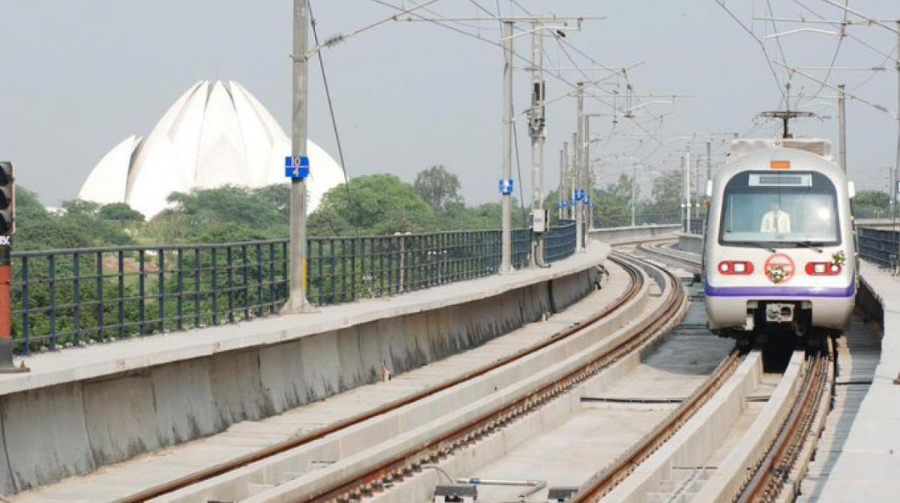
Multi‑Modal Connectivity: A Game-Changer
Perhaps the most exciting feature? The final station — Sahibabad — will offer direct integration with the Namo Bharat Rapid Rail (RRTS) corridor that runs between Delhi and Meerut.
This means commuters from Noida could:
- Board at Sector 62 → Get off at Sahibabad → Switch to Rapid Rail → Reach Meerut in 35 minutes
- Or reach Sarai Kale Khan in Delhi via the same RapidX link, skipping road traffic altogether
The integration would be via a foot overbridge or integrated concourse, allowing seamless interchange without exiting platforms.
Timeline: When Will It Be Ready?
Here’s what we know so far:
- February 2024: DMRC submitted revised Detailed Project Report (DPR) to GDA
- Mid 2024: Expected GDA and state government approval
- Late 2024: Center’s financial nod (pending Phase-V rollout)
- 2025: Tendering and groundwork likely to begin
- Expected completion: By 2027, if funding and land acquisition remain on track
Keep in mind: this timeline is optimistic and subject to political approvals and budget releases.
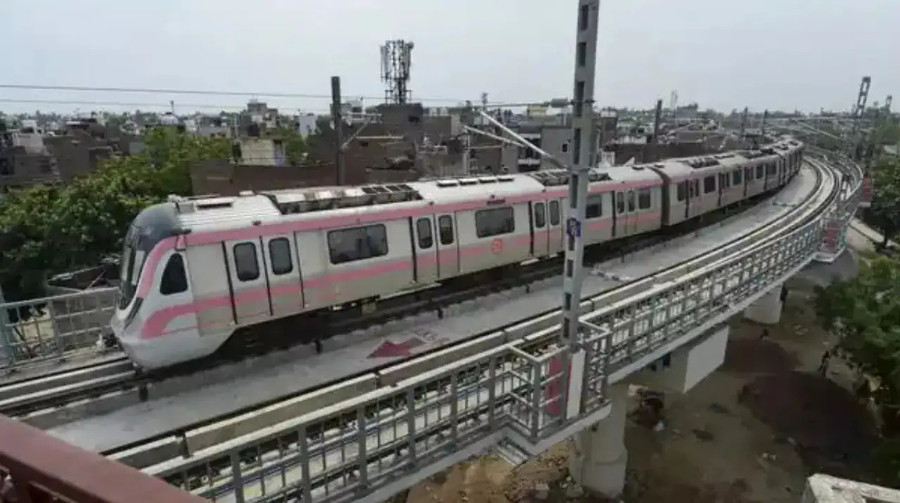
Who Benefits the Most?
The proposed Blue Line extension will primarily benefit Ghaziabad and East Delhi residents who:
- Live in Indirapuram, Vaishali, Vasundhara, Shakti Khand, Vaibhav Khand, and Rajendra Nagar
- Work in Noida Sector 62–78 IT corridors
- Travel frequently to RapidX stations like Sahibabad, Ghaziabad RRTS, or Duhai
It’s expected to reduce car and cab usage significantly, easing pressure on Delhi’s arterial roads like NH‑9 and Link Road.
Infrastructure Challenges Ahead
Despite the promise, there are hurdles:
- Land Acquisition Bottlenecks
Acquiring private land (~7,600 sq m) could spark compensation disputes and delay construction. - Rising Construction Costs
Inflation, material costs, and potential contractor disputes may escalate budgets. - Metro‑RRTS Integration Complexities
Engineering seamless interchange with the Rapid Rail platform across Link Road at Sahibabad involves significant redesigns. - Funding Uncertainties
Central funding depends on Phase‑V being greenlit fully — which may be influenced by upcoming general elections.
Why Earlier Plans Were Shelved
The 2018 and 2020 proposals failed due to:
- High costs without clear integration to Rapid Rail
- Duplication of coverage with Vaishali–Mohan Nagar metro stretch
- Political disagreements over who would fund how much
This time, however, the integration with RRTS and inclusion in Phase‑V has strengthened the case.
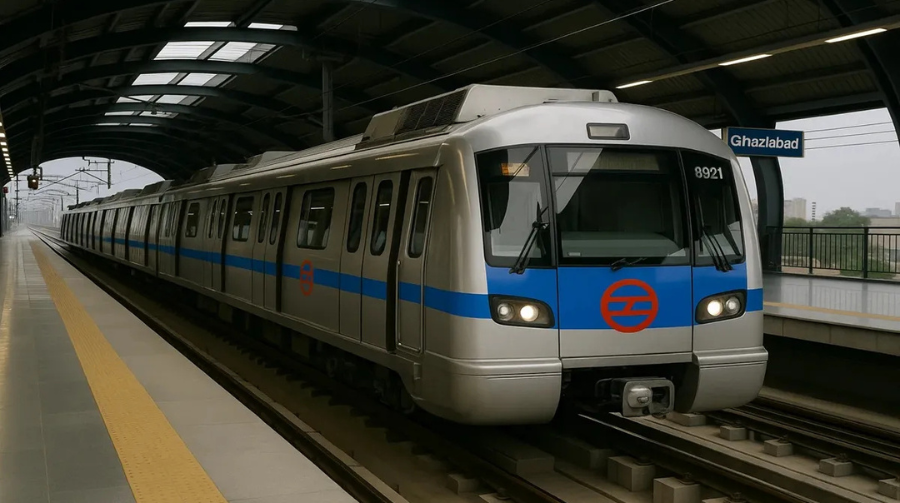
Other Metro Corridors Proposed Under Phase-V
DMRC’s Phase-V expansion includes four Ghaziabad metro corridors:
- Noida Electronic City to Sahibabad (Blue Line) – this proposal
- Vaishali to Mohan Nagar (Blue Line extension)
- Shaheed Sthal to Ghaziabad Railway Station (Red Line infill)
- Hindon Airport to Arthala (Pink Line via new Gokulpuri interchange)
Together, these aim to make Ghaziabad a major metro hub, reducing its historic dependence on Delhi junctions.
Business
Invest in Bitcoin with Just ₹100 in India: A Beginner’s Guide

Cryptocurrency is becoming increasingly accessible in India—now, you can start investing in Bitcoin with as little as ₹100. Here’s how the landscape has evolved and why this is a game-changer:
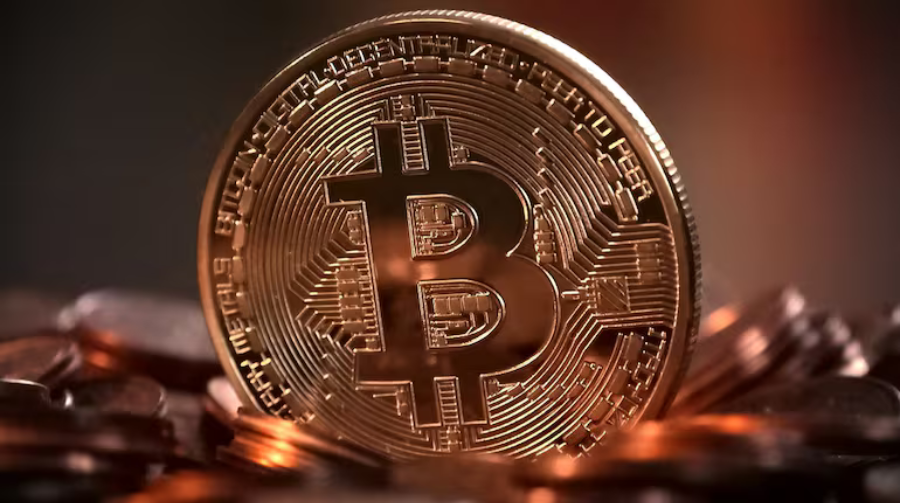
Fractional Ownership of Bitcoin
Unlike a whole Bitcoin, which costs around ₹1.05 crore today, the cryptocurrency can be bought in fractions (called satoshis). This allows investors to enter the market with minimal amounts. Platforms like CoinDCX, Mudrex, Unocoin, WazirX, Flitpay, and CoinSwitch support purchases as low as ₹100
How to Buy with ₹100: Step-by-Step
Here’s a simplified guide using any of the major Indian exchanges:
- Choose a Crypto Exchange
Select a trusted platform like CoinDCX, WazirX, or Unocoin—all allow ₹100 minimum purchases - Sign Up and Complete KYC
You’ll typically submit your PAN, Aadhaar, and a selfie to comply with Indian regulations - Deposit ₹100 INR
Use UPI, IMPS, or net banking to deposit the money into your exchange wallet - Buy Bitcoin
Go to the Bitcoin (BTC) page, enter ₹100, and buy. You’ll receive a fraction of a Bitcoin accordingly - Store Securely
Keep your BTC in the platform’s wallet or transfer to a cold wallet for enhanced security.

Start a Systematic Bitcoin Plan
Many exchanges like Unocoin and Mudrex offer Systematic Buying Plans (SIPs) or recurring buys, letting you invest ₹100 daily, weekly, or monthly. This helps average out volatility and build holdings over time
Benefits of Micro-Investing
- Beginner-Friendly: Low-risk entry for crypto newcomers
- Portfolio Diversification: Helps spread investments across assets
- Dollar-Cost Averaging: Reduces market timing risks
- Build Discipline: Start small and gradually scale
ZebPay highlights that fractional ownership empowers individuals to invest even with limited funds

Points to Watch
- Platform Fees: Small investments could be disproportionately affected by transaction fees—choose low-cost platforms
- Regulatory Uncertainty: Cryptocurrencies aren’t legal tender in India, though buying/selling is allowed; tax rules apply
- Volatility Risk: Bitcoin prices are highly volatile—invest only what you can afford to lose
Why ₹100 Matters in the Big Picture
Even tiny investments can compound over time. For example, ₹100 monthly SIPs could grow significantly during bull cycles. Plus, they help new users get comfortable with the market mechanics before scaling up.
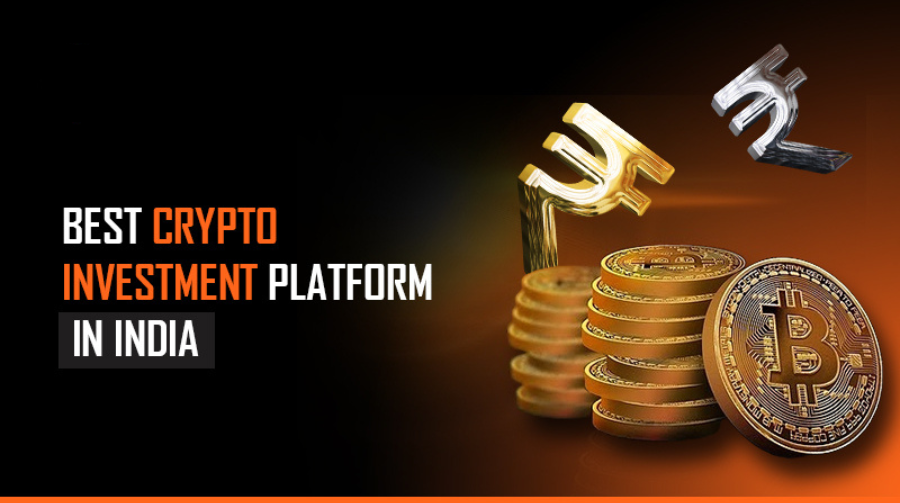
Final Takeaway
Thanks to fractional Bitcoin and user-friendly Indian platforms, you no longer need large capital to start. With just ₹100, you can:
- Start building crypto exposure
- Experience hands-on how buying, storing, and selling works
- Leverage SIPs to manage volatility and grow steadily
Just choose a reliable crypto exchange, do your KYC, invest ₹100, and begin your crypto journey today!
-

 Celebrity Lifestyle2 months ago
Celebrity Lifestyle2 months agoEx-Cricketer Shikhar Dhawan Buys Ultra-Luxury Apartment Worth ₹69 Crore in Gurugram
-

 Glamour & Entertainment1 month ago
Glamour & Entertainment1 month agoTelegram Channels Disseminating Pro‑Russian Propaganda in Poland
-

 Celebrity Lifestyle1 month ago
Celebrity Lifestyle1 month agoMaha Kumbh Girl Monalisa seen in car allegedly worth ₹1 crore
-

 News3 months ago
News3 months agoIndia offers zero-for-zero tariffs on auto parts, steel from US
-

 Education2 months ago
Education2 months agoNEET UG Controversy Explained: Paper Leak, Impersonations & Ongoing Probe
-

 News3 months ago
News3 months agoOperation Sindoor Live Updates: Pakistan used Turkey-made drones to target 26 locations, military sites in north India
-

 Cricket2 months ago
Cricket2 months ago💥 Nicholas Pooran IPL Heroics: Sixes, Records & Match-Winning Blasts
-

 Cricket3 months ago
Cricket3 months agoIPL 2025 Suspended: IPL suspended for only this many days? BCCI told when the tournament will start again!





